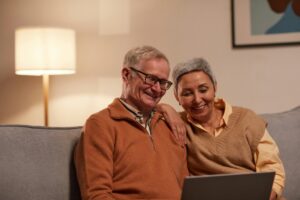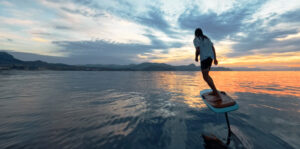By Fritz Gilbert, TheRetirementManifesto
Special to Financial Independence Hub
On April 12, 2015, I wrote my first post on this blog.
- A decade of writing.
- 441 articles.
- 1 Million Words.
Wow.
It’s been a heckuva ride. I’m in awe that over 16,000 of you subscribe to my blog and read what I write (a sincere “Thank You!” to all of you). It’s an honor, and I take it seriously. In that very first post, I wrote the following:
“This is the story of my journey, told in The Present before it becomes The Past.”
I’ve always liked that sentence, and it’s become one of my goals with this blog. To share my journey, as I’m living it, with the hope that sharing my experiences will help others achieve a great retirement.
At this point in my journey, I feel I’ve accomplished that goal.
As I seek to continually experiment with my retirement lifestyle, I challenge myself to embrace the freedom these years offer. Sometimes it’s hard, and today is one of those days. As that journey has evolved, it’s reached the point where it’s led to a major decision for this blog.
That decision?
I’m retiring from full-time blogging.
But…I’m getting ahead of myself. To gain insight into my decision and what it means for this blog, read on…
I’m retiring from full-time blogging. Today, the story behind my decision, and my plans for the future… Share on X
Shifting Gears after 10 years of Blogging
I’ve known a lot of bloggers over the past decade, most of whom have faded away. That’s not a surprise, given that 80% of blogs fail to survive beyond 18 months.
They just … disappear.
One day, you’re reading their stuff, and a few months later, you realize you haven’t seen anything from them in a while. A year later, they’re all but forgotten.
I’m taking a different approach
As always, I’m being transparent about this phase of my journey, and I’d rather tell you what I’m thinking than have you wonder where I’ve gone. This is my Present, before it becomes my Past.
After 10 years of diligent writing, it’s time to shift gears. I still enjoy writing, but it’s becoming more of an obligation than the true joy it’s been in the past. With over 440 articles in my archives, it’s harder to find fresh topics to challenge my mind. I think less and less about potential topics, a sharp contrast to the earlier years of writing when ideas were constantly flooding my mind.
It’s time to move on
I’ve always encouraged you to remember that Retirement Is Like A Game of Poker, and challenged you to constantly improve the cards you’re holding. If a card is getting stale, don’t hesitate to exchange it for a new card from the deck.
I’d be a hypocrite if I didn’t apply the same advice. The blogging card has gotten a bit stale, so I’m shuffling the deck and putting the cards down for a while.
I hope you’re doing the same.
Never stop experimenting.
Never stop improving your hand

The Future of The Retirement Manifesto
The good news is, this blog isn’t going anywhere. I have no intention of selling it, and I plan on keeping it online well into the future. I’ll still write when the urge strikes.
The thing that will change is the frequency of my writing.
After all, I’m retiring from full-time blogging. 😉
I don’t know exactly what that means yet, but I’m going to explore it for a while to see where it leads. I’ve been writing about retirement for a long time, perhaps I’ll use this platform to share thoughts on other topics in the future. Most likely, I’ll follow the path that Mr. Money Mustache and JL Collins have taken, and write when I feel I have something worthwhile to say. They both only write a few times a year, but I still read every word. I hope my readers will do the same for me.
Stay tuned (and please don’t unsubscribe)…
I’m getting busier with other activities that I enjoy, and the blogging card has become more intrusive. I seldom find time to sit at my keyboard, and I’m fine with that. I prefer to be out… .. Continue Reading…








